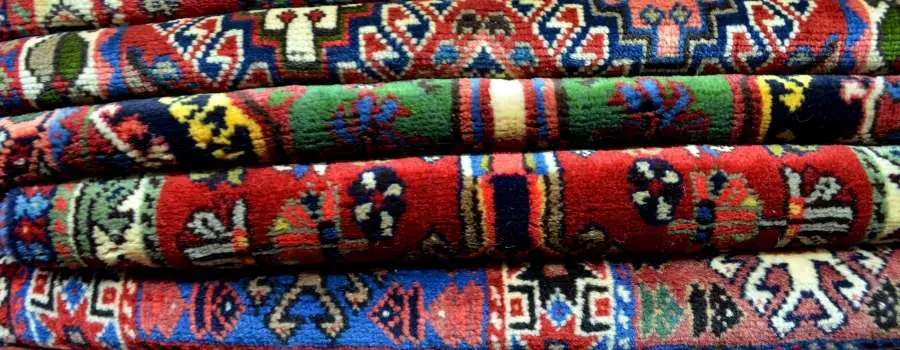
Rugs are a necessity for recording studios…but other than providing a cool vibe that’s synonymous with recording studios, rugs serve as quite the little multi-taskers.
Rugs provide sound dampening and insulation as well as protection from the noise that can interfere with recordings. They also protect the flooring, prevent tripping on cables, and offer some padding for musicians who stand for long sessions.
Of course, these are the main reasons a recording studio will have rugs and I’ll elaborate on these a bit more below. But there are many other reasons a studio will have multiple rugs…in fact, here are 10 reasons:
- Noise/Sound Control
- Cool Aesthetic
- Covering Cables
- Floor Protection
- Safer To Walk On
- Saves Musicians Feet/Ankles
- Easier On The Knees For Setup Crew
- Temperature Control
- Keeps Dust Out Of Air
- Keeps Instruments/Pedals From Sliding
Noise and Sound Control
I say “control” rather than dampening here because rugs are portable, available in different sizes and thicknesses, and can be stacked together or thinned out to help change the sound of the room.
Rugs are also available in different materials, which can affect the sound of the room. For instance, a rug made from natural fibers may absorb noise better than synthetic fiber rugs (though both work just as well).
Rugs aren’t limited to the floor either since they can be draped on the perimeter of a room to help keep sound inside and prevent sound leakage to other rooms.
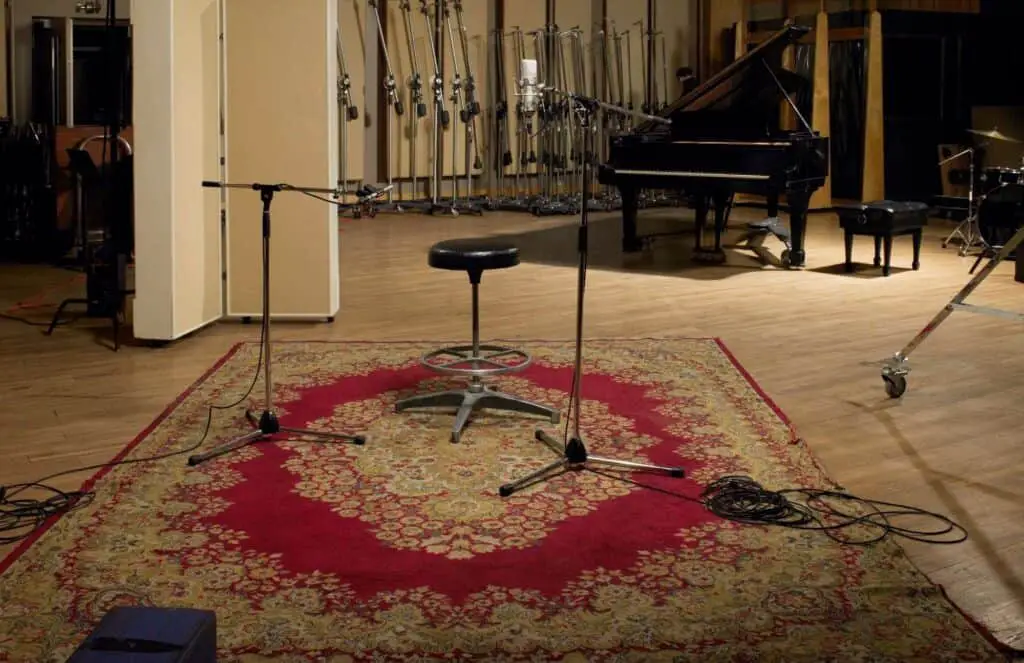
Cool Aesthetic
A rug can be a great way to add some personality and color (or even texture) to the room, as well.
Since they come in so many different shapes, sizes, and colors, you’ll have no problem finding one that matches your taste or branding needs when it comes time to make music videos or appeal to potential clients…your aesthetic is part of your marketing.
Rugs also provide an opportunity to infuse your style into a space without making any permanent changes…if you want something else in six months, just swap it out for another one.
Covering Cables
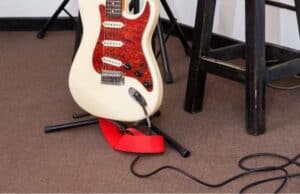
Cables on the floor are not only an eyesore but a tripping hazard. When you’re recording, it’s easy to trip over cables and interrupt your flow or even damage equipment (especially if they’re plugged in).
Rugs can be used as a cable cover so that there is less chance of them being stepped on or pulled by accident.
As an added bonus, rugs can help keep the flooring clean by catching any spilled drinks or food (especially if you have a rug mat underneath).
You might think that you can just use cable runners to prevent tripping hazards, or good ol’ gaff tape like they do on stages…and that’s largely true, but rugs are going to offer other benefits like spill protection and are much easier to change up between sessions.
Floor Protection
I mentioned drink spills above, but I’ll reiterate it here. A rug will instantly absorb anything that is spilled on it and help prevent hardwood floors from getting slippery or sticky.
They can also prevent scratches on wood floors. It’s much easier to replace a rug than it is to resurface a wood floor.
Heavy equipment can gouge and dig into a wood floor, so having a rug add some padding will keep your expensive wood floors in great shape for much longer.
Safer To Walk On
This goes hand in hand with cable management and preventing tripping on cables. In between sessions you, the musicians, or your crew may need to walk around in the studio to change out cables or microphone positions, and having something on the ground to walk on will make it much safer for everyone.
Of course, you’ll have to be mindful of any rugs that are stacked on each other or any bumps that the cables underneath have caused, but they are still much safer to walk on than the bare floor with cables strewn everywhere.
Saves Musicians Feet/Ankles
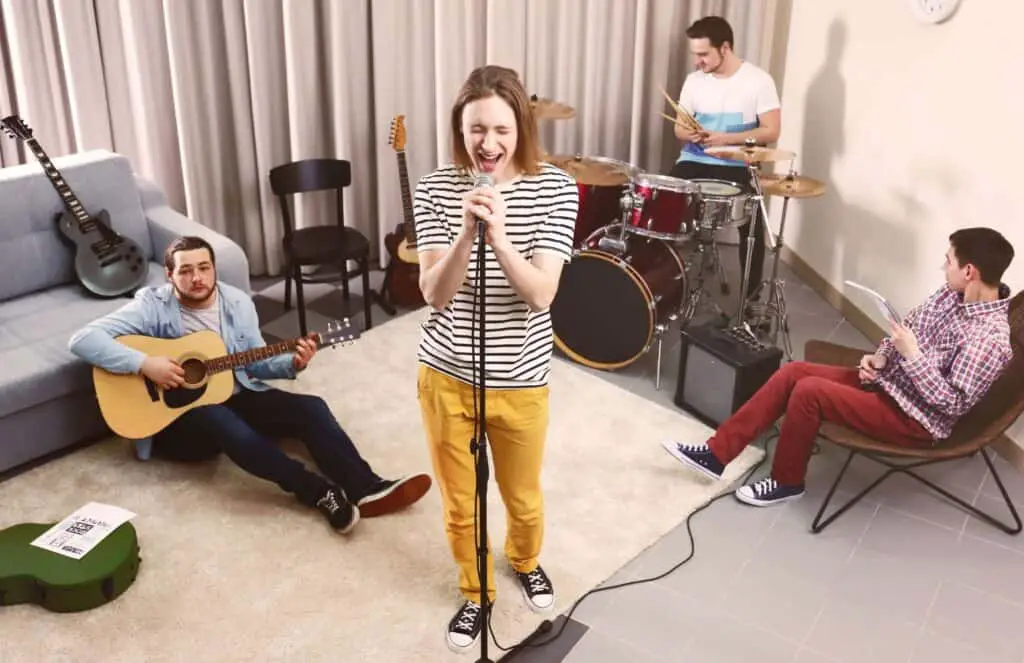
For anyone that has played in a band or been on stage for long periods of time knows that music is an activity that can take a toll on your feet and ankles.
There is a reason cashiers stand on those thick, cushioned pads at the grocery store…hard floors are rough on your feet and ankles.
The same is true for musicians at a recording session…in addition to standing, they are also usually holding a few pounds of guitar, saxophone, or other instruments. Several singers like to move a little when they sing to help emphasize their performance. The studio session will be so much easier on your musicians if they have rugs to move around on.
Easier On The Knees For Setup Crew
The crew for recording sessions is often in and out of the studio all day long, setting up cables or microphones before musicians come in to record.
They are constantly bending down to fix something which can be tough on your knees…not to mention if you need to kneel at any point during setup. It’s much more comfortable to rest a knee on a nice, soft rug than it is on the concrete or wood flooring.
Add to this that studios don’t always get a good sweeping every day so small screws, guitar picks, broken strings, etc. are likely sitting on the floor…now imagine putting a knee onto any one of those things. If they’re sitting on a rug, it may still hurt…but at least the cushion of the rug will take a little sting out.
Temperature Control
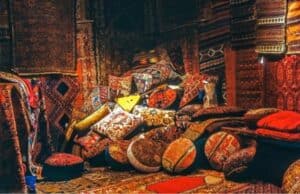
Having several rugs placed around the studio helps cut some of the cross breezes that you can get in an often chilly studio space.
Studios are often kept at a cooler temperature since musicians will heat up very quickly when playing, so having some rugs on the floor will warm the space up a bit.
It will also aesthetically warm up the space and make it much cozier.
There is also a psychological factor that comes into play when having soft rugs on the floor…studios are often just plain hard, cold spaces with no warmth or comfort to them.
Complementing this space with something as warm as a rug will really help musicians relax which can be helpful when they are trying to focus and do well in a recording session.
Keeps Dust Out Of Air
Dusty air is never good for anyone, whether you’re breathing it or playing music…and since recording studios are usually very dusty environments anyway thanks to cables and equipment, having something on the floor can really make a difference.
Not only will the dust not be as noticeable on a rug, but if you have any allergies or asthma it’s going to help tremendously in keeping your airways clear and free from irritation caused by dust.
As musicians or studio crew move around the room, dust that is trapped in the rugs won’t get disbursed into the air. Dust particles can wreak havoc on a singer’s voice and can cause people to cough at bad times, ruining takes.
This is one of the major reasons a drum set always has a rug under it, especially under the bass drum…those high-powered drum heads can kick up enough debris that they’ll make breathing very difficult.
If you ever notice any musician is constantly coughing or their airways are irritated, putting a rug down can make all the difference.
Keeps Instruments/Pedals From Sliding
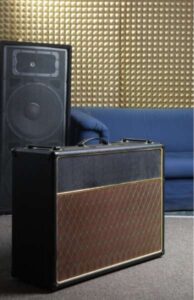
Not only is a rug great at keeping musicians from slips, trips, and falls it’s also great at keeping your instruments and gear from sliding around.
If you have a pedalboard or an instrument with pedals, the rug can help keep your feet from slipping and cause less of a skid.
If you are recording strings, then cellos and basses have footpegs that they sit on. While most have rubber covers that help prevent slipping, they are much more effective on a rug than they are on wood floors.
Some sax and brass players also prefer to put their instruments directly on the floor…I have NO IDEA why, but I’ve seen it enough to realize it’s a preference…so having a soft rug for the instruments to rest on will keep their instruments from getting scratched and make instrument changes much quieter.
A good slip-on hardwood flooring could send someone sprawling into something…especially if they dropped their instrument in the process. This is yet another thing that will make musicians more relaxed when they are in the studio.
If you’re recording a drummer, they will appreciate not hearing crashes and bangs as their drums slide around on the floor…especially if they have carpet under their setup to cut down on noise from drum heads.
Final Thoughts
Rugs are going to be a necessity for any size recording studio…whether big enough for a full orchestra or just a home-brewed one in your basement.
You’ll need a variety of sizes and thicknesses so that you can play with and adjust the sound of the room. Usually, you want the sound to be as dry as possible since it’s easy to add things but almost impossible to take things out.
But, you may like the sound of your room and want a little of that baked in. Having a half dozen rug options will give you the flexibility to adjust to taste.
